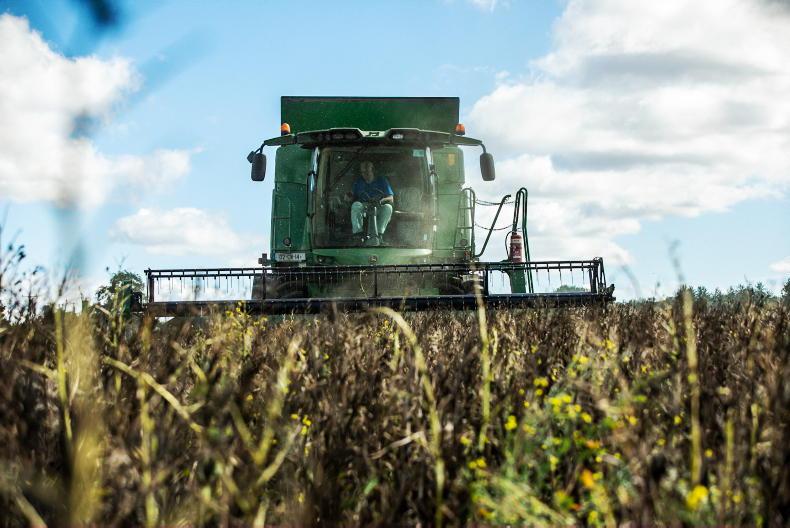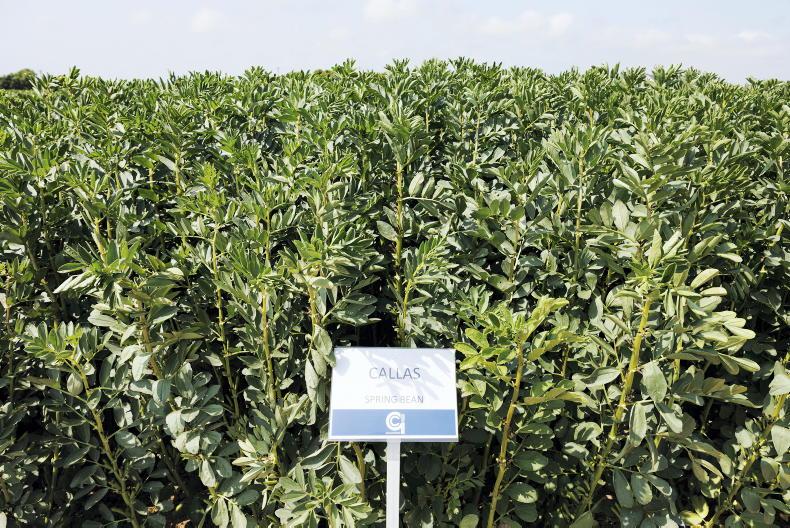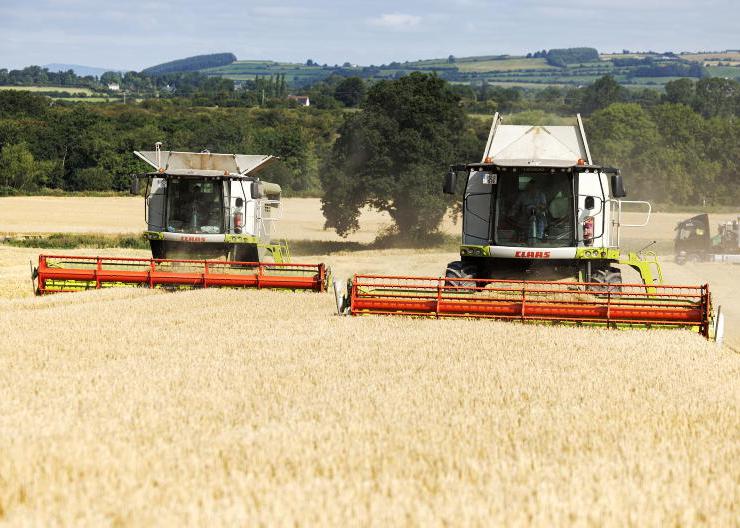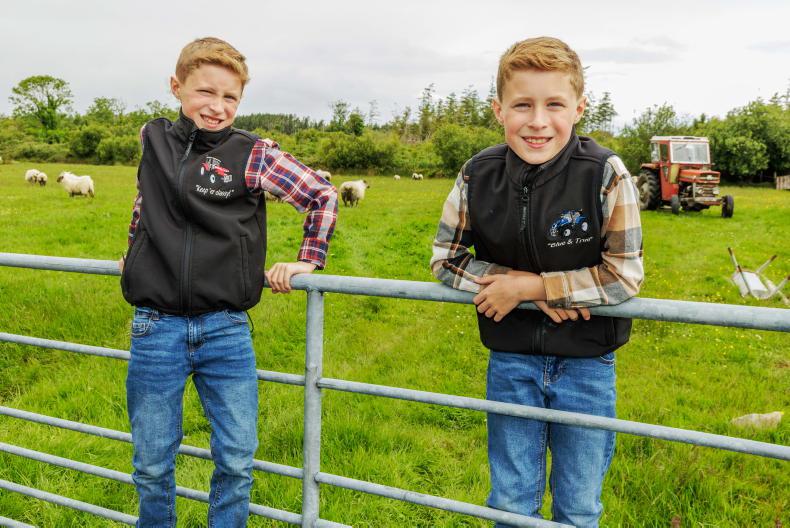Tillage farmers have many different options when it comes to growing crops, from common crops like barley and wheat, to crops for silage, like maize.
In recent years, the growing of protein crops has become more popular again. This is because much of the protein that we use to produce animal feed rations comes from countries in South America where deforestation has taken place.
Some years ago, protein crops were more popular, with many farmers growing peas for Batchelors, as there was once a canning factory in Athy.
Many farmers in that area still grow peas, but for animal feed now and the number of farmers growing peas for canning is very small.
Peas are notoriously hard to harvest, as they need to be cut as soon as they’re ready, so they don’t do well in bad weather. As a result, beans have become more popular to grow for animal feed.
Some feed manufacturers are diligently trying to increase the amount of Irish-grown protein in their feed rations, so that it is more sustainable and therefore the milk and meat produced from that feed is more environmentally friendly, but it has been hard to get farmers to grow protein crops.
While beans are slightly more resilient than peas, they do have a late harvest date and yields can vary hugely from year to year. The Government has been paying farmers to grow protein crops for seven years and this has helped to increase the area. Last year, the Government, along with people from the tillage industry, set a target to double the area of protein crops grown to 20,000ha.
They have now doubled the budget available to pay farmers under the protein aid scheme. This money takes some of the risk out of growing the crop, but there are a number of other reasons why farmers grow beans.
Planting
Spring beans are planted around this time of the year, but can be sown into early April. They are a tall plant with a white flower in the summer time and are harvested around September.
Why do farmers grow beans?
To sell for animal feed. They are a nitrogen fixing crop. This means they have an ability to produce their own nitrogen and don’t need any artificial nitrogen, which is very expensive and has quadrupled in price in the past two years or so. They don’t require as much fungicides to protect against disease during the season compared to crops like winter wheat. Beans are very good for the soil because they have a big root. This can help to improve soil structure where machinery has caused compaction. The benefits they bring to the soil and the nitrogen they fix can help to increase the yield of the crop grown after beans. Beans are planted and harvested at different times to cereal crops, so they can help to break up the work on a farm and take pressure off farmers. Some co-ops and merchants offer a minimum price for beans at the start of the season, so you know that you are guaranteed a minimum price per tonne. Nitrogen-fixing crops
Beans are legumonous crops, like peas and clover. These crops have nodules on their roots which help to fix nitrogen from the atmosphere for use by the plant. This is why no artificial nitrogen is needed. Clover works in the same way, except in Ireland, clover is mostly sown along with grass, so a small amount of artificial nitrogen is required to get the grass growing before the clover starts to work, or if there is not enough clover, more nitrogen is needed.
Beans are a really good crop for biodiversity. Bees and other insects flock to bean crops when they are in flower. They also help to improve soil biodiversity by improving soil health and structure.
Tillage farmers have many different options when it comes to growing crops, from common crops like barley and wheat, to crops for silage, like maize.
In recent years, the growing of protein crops has become more popular again. This is because much of the protein that we use to produce animal feed rations comes from countries in South America where deforestation has taken place.
Some years ago, protein crops were more popular, with many farmers growing peas for Batchelors, as there was once a canning factory in Athy.
Many farmers in that area still grow peas, but for animal feed now and the number of farmers growing peas for canning is very small.
Peas are notoriously hard to harvest, as they need to be cut as soon as they’re ready, so they don’t do well in bad weather. As a result, beans have become more popular to grow for animal feed.
Some feed manufacturers are diligently trying to increase the amount of Irish-grown protein in their feed rations, so that it is more sustainable and therefore the milk and meat produced from that feed is more environmentally friendly, but it has been hard to get farmers to grow protein crops.
While beans are slightly more resilient than peas, they do have a late harvest date and yields can vary hugely from year to year. The Government has been paying farmers to grow protein crops for seven years and this has helped to increase the area. Last year, the Government, along with people from the tillage industry, set a target to double the area of protein crops grown to 20,000ha.
They have now doubled the budget available to pay farmers under the protein aid scheme. This money takes some of the risk out of growing the crop, but there are a number of other reasons why farmers grow beans.
Planting
Spring beans are planted around this time of the year, but can be sown into early April. They are a tall plant with a white flower in the summer time and are harvested around September.
Why do farmers grow beans?
To sell for animal feed. They are a nitrogen fixing crop. This means they have an ability to produce their own nitrogen and don’t need any artificial nitrogen, which is very expensive and has quadrupled in price in the past two years or so. They don’t require as much fungicides to protect against disease during the season compared to crops like winter wheat. Beans are very good for the soil because they have a big root. This can help to improve soil structure where machinery has caused compaction. The benefits they bring to the soil and the nitrogen they fix can help to increase the yield of the crop grown after beans. Beans are planted and harvested at different times to cereal crops, so they can help to break up the work on a farm and take pressure off farmers. Some co-ops and merchants offer a minimum price for beans at the start of the season, so you know that you are guaranteed a minimum price per tonne. Nitrogen-fixing crops
Beans are legumonous crops, like peas and clover. These crops have nodules on their roots which help to fix nitrogen from the atmosphere for use by the plant. This is why no artificial nitrogen is needed. Clover works in the same way, except in Ireland, clover is mostly sown along with grass, so a small amount of artificial nitrogen is required to get the grass growing before the clover starts to work, or if there is not enough clover, more nitrogen is needed.
Beans are a really good crop for biodiversity. Bees and other insects flock to bean crops when they are in flower. They also help to improve soil biodiversity by improving soil health and structure.









SHARING OPTIONS